Terminal des bus interurbains de Cheongsong
15.0Km 2921 2015-12-04
484-40 Wolmak-ri Cheongsong-eup Cheongsong-gun Gyeongsangbuk-do
+82-54-873-2036
Le festival de la pomme à Cheongsong (청송사과축제)
15.3Km 2853 2022-09-13
Songsaeng-ri, Cheongsong-eup, Cheongsong-gun, Gyeongsangbuk-do
• Centre d'appels 1330 : +82-54-1330 (coréen, anglais, japonais, chinois) • Pour obtenir plus d'info : +82-54-873-0101
Le festival de la pomme à Cheongsong est un festival d’automne plein d’événements avec un marché largement bien approvisionné en pommes de haute qualité à un prix raisonnable. Les événements incluent des compétitions, des jeux, des activités, des pièces de théâtre et bien d’autres. Tentez votre chance à l’une des compétitions (manger des pommes, fendre une image à mains nues, gourmandises au jus de pomme) ou ayez une approche plus calme des festivités en passant par les programmes d’activités (attraper des pommes, faire des savons et des produits de soins du corps à base de pommes, etc.). Il y a également une variété de jeux au thème de la pomme comme la coupe du monde de la pomme ou des jeux de fléchettes avec des pommes.
*Les pommes cultivées dans les environs de Cheongong sont connues pour leur goût supérieur et leur qualité grâce à leur environnement propre, à l’air frais de la montagne et les eaux claires et propres. Beaucoup attribuent le goût frais et juteux de la pomme à la haute différence de température quotidienne qui résulte de la haute altitude de la région.
Chalbanggong Head House [Korea Quality] / 찰방공종택 [한국관광 품질인증]
16.2Km 5840 2020-09-10
23-8, Songsogotaek-gil Pacheon-myeon, Cheongsong-gun, Gyeongsangbuk-do
+82-54-873-6502, +82-10-9502-7611
The Chalbanggong Head House is a resting place in nature that is open to everyone. The house was built in 1933 as the head house of Chalbanggong Shim Dang, a 9th-generation descendant of Akeungong from Cheongsong Shim’s Family. The place was also used as a village school and is designated as local cultural heritage no. 13. The structure of the house is shaped like the Korean alphabet "ㄷ". The fact that the gate of the house is facing north is very unusual. The house is positioned next to the Songso Old House, which has 99 rooms, and is composed of Ondol rooms heated by firewood as well as a wide yard and a vegetable garden. The place provides a comfortable resting space for those who want to enjoy the atmosphere of a traditional Korean-style house that they cannot easily see in urban areas. The rooms are papered with traditional Korean paper and equipped with beddings. The house is located in a region that is so quiet you can barely hear a thing except the sound of birds and wind. There is an ancestral shrine in the head house that looks just like a warm grandma’s house.
Maison traditionnelle Songsogotaek à Cheongsong (청송 송소고택)
16.3Km 4136 2021-12-22
15-2, Songsogotaek-gil, Pacheon-myeon, Cheongsong-gun, Gyeongsangbuk-do
+82-54-874-6556
Il s'agit de la maison traditionnelle, dit “Hanok”, construite dans les années 1880 par Sim Ho-taek, 7ème génération de Sim Cheo-dae, le multi millionaire de l'époque du règne du roi Yeongjo (1694-1776). Cette maison est aussi connue sous le nom de “Sim Bujatjip” (maison du riche Sil).
Entourée par une forêt, la maison d'intègre harmonieusement à la nature environnante. Elle est immense, elle se compose de sept édifices et de 99 chambres. Le jardin est la première chose que vous verrez en entrant. La maison est de forme rectangulaire, c'est un bon exemple des maisons de noble de la dynastie Joseon.
C'est aujourd'hui un hébergement idéal pour les touristes qui désirent découvrir la Corée traditionnelle. Si vous y passez la nuit vous aurez l'occasion d'apprendre quelques jeux folkloriques traditionnels, comme le jegichagi, le lance-pierre, le tuho (lancer de flèches) et plus. De nombreuses familles dont les ancêtres occupaient des postes importants au cours de la dynastie Joseon vivent dans les alentours de Deokcheon .
Song jeong Historic House [Korea Quality] / 송정고택 [한국관광 품질인증]
16.3Km 8154 2020-09-10
15-1, Songsogotaek-gil Pacheon-myeon, Cheongsong-gun, Gyeongsangbuk-do
+82-10-8746-6690
Cheongsong-gun in Gyeongsangbuk-do is a small village blessed with a spring flowing with natural mineral water, a beautiful valley with a majestic waterfall, and a mountain densely covered with pine trees. Thanks to this superb natural environment, Cheongsong-gun was designated as a 'Slow City' in 2011. Songjeong gotaek (The Old House of Songjeong) is located in the village of Deokcheon in Cheongsong-gun, which is one of the three richest and most prestigious families in the region.
These three wealthy families are said to have produced millionaires for nine generations - from Sim Cheon-dae during the reign of King Yeongjo of Joseon (r. 17224-1776) to the 1960s. In particular, it was a seventh-generation grandson, Sim Ho-taek (pen-name: Songso), famous as one of the richest men in Joseon, who built Songso gotaek (Old House of Songso) along with three houses for his three sons, including Songjeong gotaek for his second son Sim Sang-gwang (pen-name: Songjeong) around 1880. As the Cheongsong Sim Clan has lived in the area for many generations, Cheongsong is known as the village of the Cheongsong Sim family.
Covering a total area of about 10,000m2, Songjeong gotaek has a tall and grand front gate that symbolizes the wealth of the family. Upon entering by the gate, the large outer courtyard comes into view, followed by a gate connecting to the Old House of Songso on the right, and a walking path connecting to a well and a pine grove on the left. The square-shaped structure consists of a sarangchae (detached building), chaekbang (library), and daecheongmaru (main floored room). Passing through the entrance, there are the main building and the inner courtyard. Notably, the chaekbang has retained its original appearance from the time when it was used by Sim Sang-gwang.
Although the house is very large, its interior is simply and modestly designed according to the virtues favored by classical scholars. The rooms are floor-heated in the traditional way (by ondol) using wood, decorated with traditional hanji (Korean paper), and equipped with traditional bedding.
Songjeong gotaek offers visitors a variety of experience programs designed to promote the form of Korean classical music known as Gukak. It holds three major musical events each year including a pansori folksong program and a fusion gukak concert, attracting an audience of anywhere from 200 to 800 people to the courtyard of the house. Sometimes, families hold parties to celebrate their parents’ 60th, 70th, and 80th birthdays.
The low hill situated behind the house has a quiet walking path.
Cheong won dang [Korea Quality] / 청원고택 [한국관광 품질인증]
16.4Km 646 2021-04-01
3 Songsogotaek-gil, Pacheon-myeon, Cheongsong-gun, Gyeongsangbuk-do
+82-10-3530-6119 / +82-54-872-6119
Under joint management with the Korean Tea Association’s Yeongeun Culture Center, Chungwon Gotaek is a great place to enjoy traditional Korean tea time while experiencing a traditional Korean house where you will see all the features of an old Korean house as well as how people lived a slow and leisurely life in the past. Since Chungwon Gotaek only has one stand-alone guestroom that can be booked by only one couple/group at a time, it’s the perfect place to stay for leisure. The guesthouse has a separate tea room managed by the Yeongeun Culture Center, where you can enjoy traditional Korean tea while learning the proper way to drink tea in Korea, which is quite different from that of other Asian countries. Many Korean guests will agree that they feel at home. The guesthouse also serves Korean-style breakfast, which includes various side dishes that vary by season.
Le Village d’Art de Jirye (지례예술촌)
16.7Km 4568 2024-07-08
769, Bakgok-ri, Imdong-myeon, Andong-si, Gyeongsangbuk-do
+82-54-852-1913
Le village d’art de Jirye à Andong est le l’endroit par excellence où vous pourrez vivre une experience de la culture coréenne traditionnelle. Le site a été désigné comme village artistique en 1990. Le site propose de nombreuses activités liées aux traditions en Corée et à l'artisanat.
Temple Daejeonsa (대전사)
17.9Km 3573 2021-12-08
Juwangsan-myeon, Cheongsong-gun, Gyeongsangbuk-do
+82-54-873-2908
Baengnyeonam fait partie du temple Daejeonsa et il est situé à l’opposé du temple. Avec une rivière claire comme du cristal en face et le pic de Janggunbong en arrière fond, l’hermitage Baengnyeonam est situé au coeur de la nature. Bien que la date de construction soit inconnue, on pense qu’il a été nommé après Baengnyeon, la fille de King Ju.
Durant la guerre Imjin (invasion japonaise de la Corée, 1592-1598), le grand moine bouddhiste Samyeong est resté dans l’hermitage dans un bâtiment appelé Songunjeongsa. Bien que le bâtiment n’existe plus, il est encore possible de trouver l’endroit et une plaque marquant le lieu. Parmi les artefacts qui ont réussi à traverser le temps il y a le Sanwanggak et Yosa et le portrait du grand moine bouddhiste Samyeong.
Parc national du Mt. Juwangsan (주왕산국립공원)
18.2Km 4756 2021-03-30
169-7, Gongwon-gil, Cheongsong-gun, Gyeongsangbuk-do
+82-54-870-5300
Le mont Juwangsan (721 m) a été classé parc national en 1976, il s'agit actuellement du plus petit des parcs nationaux du pays. Ce parc national se situe au beau milieu d’un zone montagneuse. Cette montagne aux inclinaisons faibles est un lieu propice pour la promenade.
Juwangsan est aussi appelé Seokbyeongsan, Jubangsan ou encore Daedusan. Il existe une légende concernant Juwon le roi de Silla (dynastie allant de -57 à 935) qui dit-on vécut dans cette montagne après avoir été défait par le royaume de Goryeo. C'est pour cette raison que la Montagne porte aussi le nom de mont Juwang. De plus on raconte aussi que le Roi Wuju de la Chine des Jin vint se retirer dans cette montagne et fut découvert par le Général de Goryeo Ma Ilseong et tué à coup de flêches et de massue de fer.
De nombreux temples et érmitages sont présents à Juwangsan : Daejeonsa, Gwangamsa, Yeonhwasa, Juwangam, Baengnyeonam, Yeonhwaam... Daejeonsa abrîte un portrait du Patriarche Samyeong ainsi qu’un panneau écrit de la main du Général Yi Yeosong ( ?-1598) du Royaume des Tang envoyé au Patriarche, tous deux classés trésors culturels.On peut y voir de nombreux rochers, Giam, Seokbyeolam, Geupsudae, Jeongam, Adeul bawi, mais également la grotte où vécut le Roi Juwang avant d’être assassiné, la grotte de Mujang où étaient entreposées des armes, celle de Yeonhwa qui servait de terrain d’entraînement (150m x 7m) ...
A voir également, les chutes d’eau numéro 1, 2 et 3 et la chute de Dalgi, les vallées de Juwang, Woloe, Naewon. Sur le cours moyen du fleuve Goenae se trouve le point d’approvisionement en source d’eau minérale, Dalgi.
Suaedang [Korea Quality] / 안동 수애당 [한국관광 품질인증]
18.2Km 71641 2023-04-13
1714-11, Sugogyonggye-ro Imdong-myeon, Andong-si, Gyeongsangbuk-do
+82-54-822-6661
'Suaedang Traditional House was built by Ryu Jin-geol, also known by his pen-name of Suae, in 1939. This hanok-style house consists of three buildings that measure 29-kan (a traditional measurement that corresponds to the space between two columns) in total.
The main room, or jeongchim (7-kan at front and 2-kan at sides), has a half-hipped roof, and forms a‘ㄱ’-shape with the storeroom (10-kan at front), which also has a half-hipped roof. Originally located at 612 Sugok-dong, Andong-si, the house was relocated from a slight slope to a flat piece of land due to the construction of Imha Dam in 1987. Consequently, the Jeongchim was rebuilt at a lower level than before.
The Suaedang was renovated by modernizing the old-style facilities including the kitchen, toilets, and washroom without changing their external features, while the rooms and daecheongmaru (main floored room) were decorated with red clay and natural paint. Suaedang, with its beautiful panoramic view of the lake, was designated as Gyeongsangbuk-do Cultural Property No. 56.

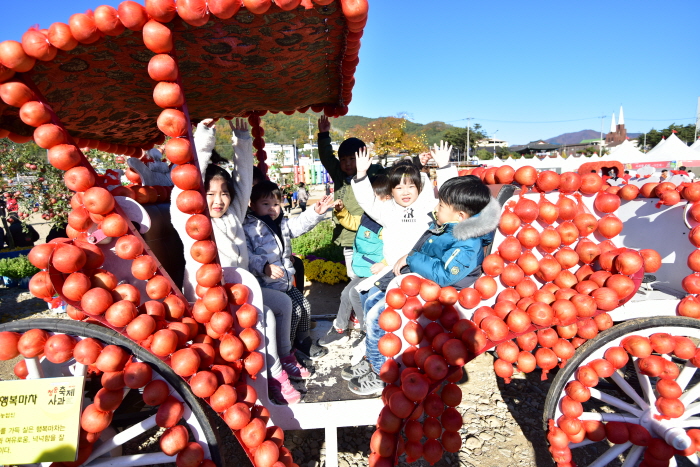
![Chalbanggong Head House [Korea Quality] / 찰방공종택 [한국관광 품질인증]](http://tong.visitkorea.or.kr/cms/resource/07/2528907_image2_1.jpg)
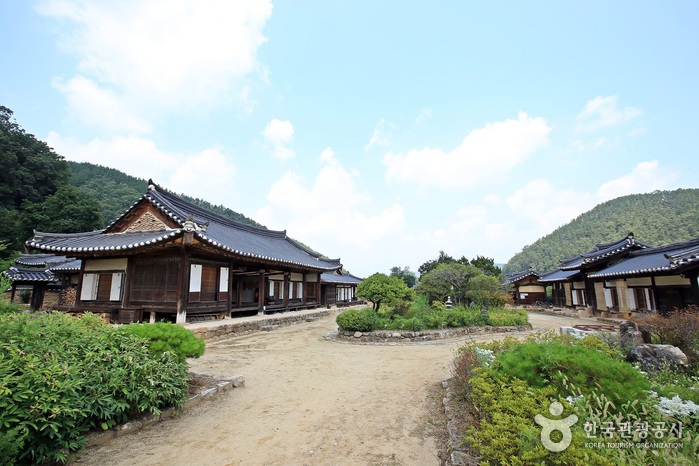
![Song jeong Historic House [Korea Quality] / 송정고택 [한국관광 품질인증]](http://tong.visitkorea.or.kr/cms/resource/75/2573875_image2_1.jpg)
![Cheong won dang [Korea Quality] / 청원고택 [한국관광 품질인증]](http://tong.visitkorea.or.kr/cms/resource/32/2528932_image2_1.jpg)
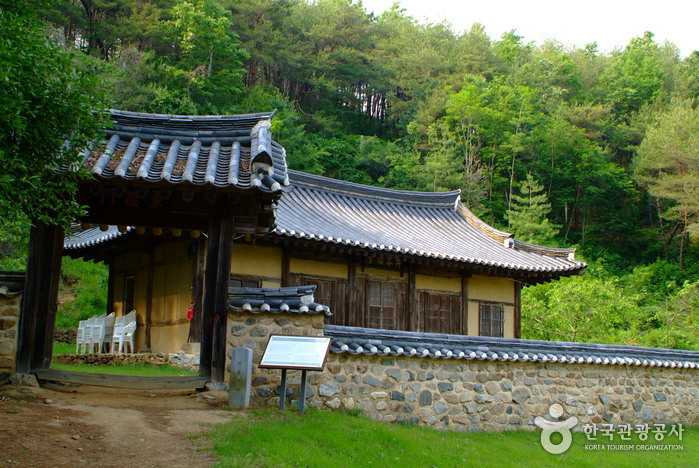
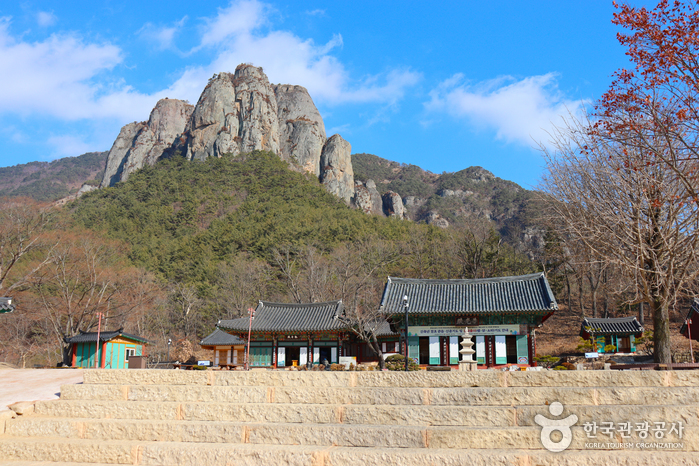
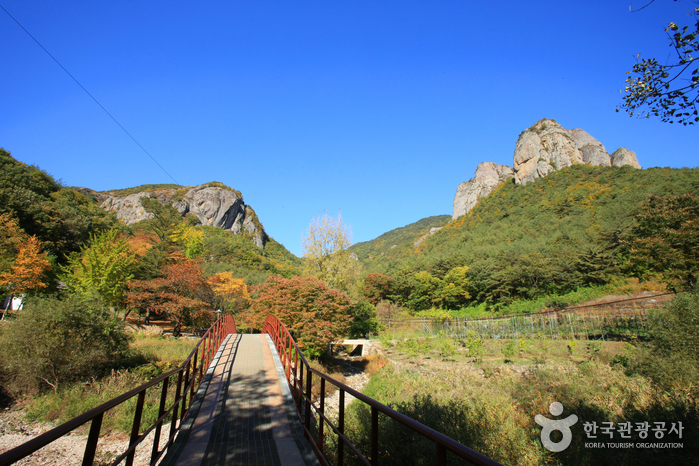
![Suaedang [Korea Quality] / 안동 수애당 [한국관광 품질인증]](http://tong.visitkorea.or.kr/cms/resource/88/2528888_image2_1.jpg)
 Français
Français
 한국어
한국어 English
English 日本語
日本語 中文(简体)
中文(简体) Deutsch
Deutsch Español
Español Русский
Русский